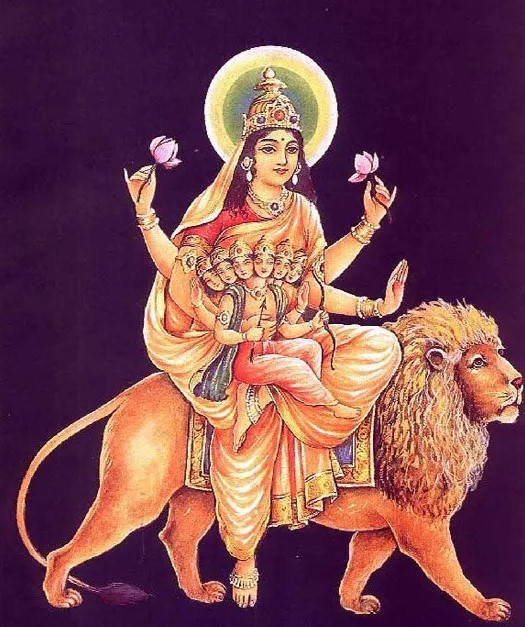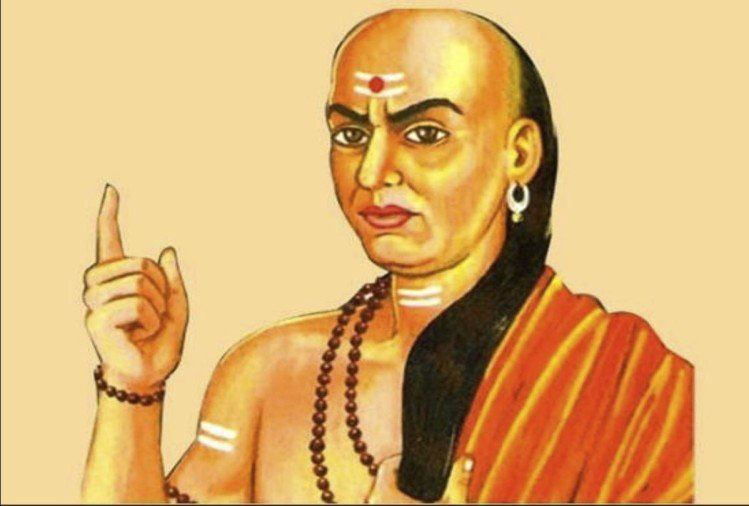Maa Skandamata is one of the nine goddesses of Hinduism who is worshiped during the nine days of Navratri. She is the mother of Skanda (Kartikeya), the fifth son of Goddess Parvati and second son of Shiva. Mother Skandamata’s name is a close variant of ‘Skanda’ (Kartikeya) and ‘Mata’, which means “Mother of Skanda”. He has arrows and kamandalu in his four hands, and his vehicle is an elephant.
Maa Skandamata is also known by the names of Vijaya, Bala, Girija, Shailaja, Giriraja, Vahini, Kraunch, Tung,
Jayanti, Kriti, Vishalakshi, Krodhavasha, Narayani, Varahi, Vrishasuravinashini, Brahmani etc. Embrace the vibrant worship of Maa Skandamata, celebrated under diverse names that mirror the myriad facets of her celestial being.
Among these names are Vijaya, Bala, Girija, Shailaja, Giriraja, Vahini, Kraunch, Tung, Jayanti, Kriti, Vishalakshi, Krodhavasha, Narayani, Varahi, Vrishasuravinashini, Brahmani, and many more.
These names encapsulate the multifaceted nature of the goddess, embodying her power, grace, and protective presence. By worshiping and meditating Goddess Skandamata, devotees attain strength, happiness, satisfaction and accomplishment. His darshan takes place in Jyotipeeth, Jaipur, Rajasthan.
You can worship Maa Skandamata by following steps:
Chaitra Navratri 2024 चैत्र नवरात्रि | Maa Brahmcharini Navratri मां ब्रह्मचारिणी | Vrat wale Fried Aloo
Purification and Bath: Before performing puja, take bath for purification and wear pure clothes.
Prepare the puja space : by selecting a clean and easily accessible area conducive to worship, Place the idol of Mother Skandamata in the center, ensuring it is positioned with reverence and respect.
Meditation and Mantra Chanting: Meditate on Goddess Skandamata and chant her mantras. “Om Devi Skandamatayee Namah” This mantra is useful in worship.
Start of worship: Start worship towards Mother Skandamata. Use flowers, incense, lamp, naivedya (sweets or fruits), rice, kumkum, incense sticks etc.
Katha and Aarti: Recite the special story of Maa Skandamata and sing her aarti.
Prasad Distribution: After the puja, distribute the prasad and give it to other people also.
Fast and charity: If possible, you can keep a fast and donate food and money to the poor.
This method serves as a foundation, adaptable to various contexts and circumstances. Practices may diverge based on individual locations and specific situations, allowing for flexibility and customization to meet diverse needs and preferences.
You should consult the priests or religious guides near you in the method of worship you choose.
मां स्कंदमाता – Maa Skandamata
Maa Skandamata : मां स्कंदमाता, हिंदू धर्म की नौ देवियों में से एक हैं जो नवरात्रि के नौ दिनों के अवसर पर पूजा जाता है। वे माँ पार्वती के पांचवें और शिव के दूसरे पुत्र स्कंद (कार्तिकेय) की माँ हैं। मां स्कंदमाता का नाम ‘स्कंद’ (कार्तिकेय) और ‘माता’ के एक निकट रूप से है, जिसका अर्थ होता है “स्कंद की माँ”। उनके चार हाथों में तीर और कमंडलु होते हैं, और उनका वाहन हाथी होता है। मां स्कंदमाता को विजया, बाला, गिरिजा, शैलजा, गिरिराजा, वाहिनी, क्रौंच, तुंग, जयंती, क्रिती, विशालाक्षी, क्रोधवशा, नारायणी, वाराही, वृषासुरविनाशिनी, ब्रह्माणी आदि के नामों से भी जाना जाता है। मां स्कंदमाता की पूजा और उनके ध्यान से साधक शक्ति, सुख, संतोष और सिद्धि प्राप्त करते हैं। उनका दर्शन ज्योतिपीठ जयपुर राजस्थान में होता है।
मां स्कंदमाता की पूजा करने के लिए निम्नलिखित चरणों का पालन किया जा सकता है:
- शुद्धि और स्नान: पूजा करने से पहले, शुद्धि के लिए स्नान करें और शुद्ध वस्त्र पहनें।
- पूजा स्थल की तैयारी: एक साफ और सुगम्य स्थान का चयन करें जहां पूजा की जा सके। माँ स्कंदमाता की मूर्ति को स्थापित करें।
- ध्यान और मंत्र जप: माँ स्कंदमाता का ध्यान करें और उनके मंत्रों का जाप करें। “ॐ देवी स्कंदमातायै नमः” यह मंत्र पूजा में उपयोगी है।
- पूजा आरंभ: मां स्कंदमाता के प्रति पूजा आरंभ करें। फूल, धूप, दीप, नैवेद्य (मिठाई या फल), चावल, कुमकुम, अगरबत्ती आदि का उपयोग करें।
- कथा और आरती: माँ स्कंदमाता के विशेषता कथा का पाठ करें और उनकी आरती गाएं।
- प्रसाद वितरण: पूजा के बाद, प्रसाद को बांटें और अन्य लोगों को भी दें।
- व्रत और दान: यदि संभव हो तो आप व्रत रख सकते हैं और गरीबों को भोजन और धन दान कर सकते हैं।
Chaitra Navratri 2024 चैत्र नवरात्रि | Maa Brahmcharini Navratri मां ब्रह्मचारिणी | Vrat wale Fried Aloo
यह सिर्फ एक साधारण तरीका है, प्रत्येक स्थान और परिस्थिति के अनुसार विभिन्न प्रथाओं का पालन किया जा सकता है। आपके द्वारा चुने गए पूजा विधि में आप अपने आस-पास के पुजारियों या धार्मिक गाइड से सलाह लें।



